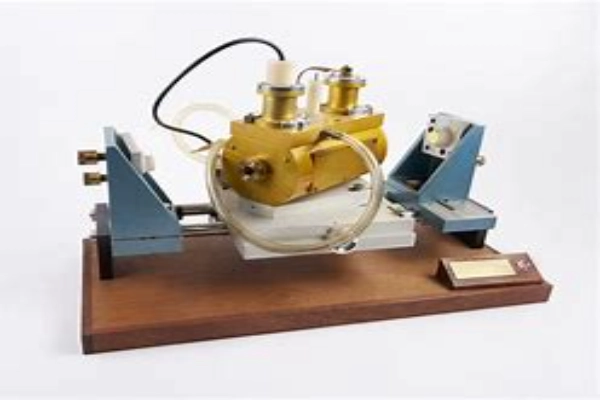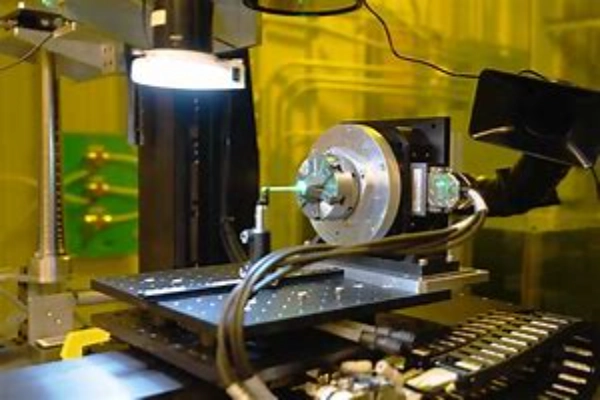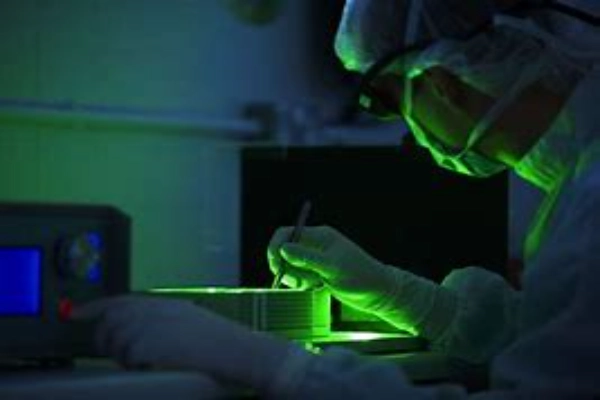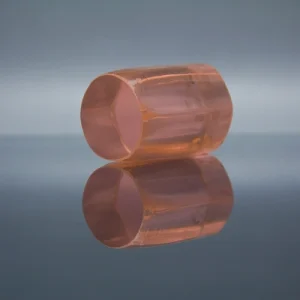Introduction to High Repetition Rate Solid State Lasers
Solid-state lasers are pivotal in an array of applications, from industrial processes to medical procedures. One prominent subtype in this category is the High Repetition Rate Solid State Lasers. With rapid technological advances, it’s essential to understand and harness the capabilities of these lasers.

Basic Working Principle of High Repetition Rate Solid State Lasers
The High Repetition Rate Solid State Lasers, often abbreviated as HRRSSL, represent a pinnacle of precise and rapid-fire laser technology. At the core of their operation is the principle of stimulated emission of radiation. Let’s break this down a bit.
When we say “stimulated emission”, we are referring to the process of emitting light in a highly organized manner. In simpler terms, it’s like meticulously organizing books on a shelf, rather than haphazardly stacking them. This organization gives lasers their unique properties like being a coherent and monochromatic light source.
The heart of this laser is its lasing medium, which is typically a crystal or glass that has been “doped” or infused with certain materials. Nd:YAG and ruby are among the most common choices. These materials have properties that make them conducive to producing laser light. But these mediums don’t do this all on their own; they need a nudge, which is where the external energy source comes in.
Often, this energy source is a flashlamp or even another laser. Its primary job is to provide energy to the atoms inside the lasing medium. When these atoms absorb this energy, they move to what’s known as an “excited state”. It’s a bit like giving them a shot of caffeine. However, atoms don’t like staying excited for long, and when they return to their normal state, they release energy in the form of a photon. If you’ve ever seen a neon sign glow, this is somewhat similar, but in the case of the laser, it’s much more organized.
Now, just emitting these photons isn’t enough. We need to amplify them to get a useful laser beam. This is where the optical cavity comes into play. Think of it as a hall of mirrors for photons. One end of this cavity is a fully reflective mirror, and the other end is a partially transparent one. As photons bounce back and forth between these mirrors, they stimulate the emission of even more photons from the excited atoms in the medium. This feedback loop amplifies the light significantly.
Finally, we have the output beam. This isn’t just any ordinary light. It’s coherent, which means the light waves are all in phase with one another. This is why lasers can be focused on a very tight spot and why they’re so useful in applications ranging from cutting metals to performing delicate eye surgeries.

Distinctions Between High Repetition Rate Lasers and Conventional Lasers
The world of lasers is vast and diverse, with each type designed for specific tasks and applications. Among these, High Repetition Rate Lasers (HRR Lasers) and Conventional Lasers stand out as two of the most prominent categories. Understanding the distinctions between these two can provide insights into their diverse applications and their evolution in the world of photonics.
When we talk about the frequency of pulses, it’s analogous to discussing the “heartbeat” of the laser. Each pulse can be visualized as a beat. In High Repetition Rate Lasers, this heartbeat is extremely fast. Imagine the rapid beat of a hummingbird’s wings compared to the leisurely flap of an eagle; that’s the difference in their pulse rates. This rapid-fire capability allows these lasers to deliver energy in quick successions, making them suitable for tasks where speed and repetition are paramount.
Diving deeper into their applications, the rapid pulse rate of HRR Lasers has paved the way for their usage in fields demanding high precision and efficiency. In contrast, conventional lasers, with their relatively slower pulse rates, are more commonly found in everyday devices. The CD players many grew up with or the barcode scanners at grocery store checkouts employ conventional lasers. These lasers are adequate for reading data from a disc or scanning a product code, tasks that don’t necessarily require a rapid succession of laser pulses.
On the other hand, High Repetition Rate Lasers have carved a niche in areas where precision and speed are crucial. Consider the domain of precision machining. Materials, especially delicate ones, might require minute alterations or cuts that need to be executed swiftly to prevent damage. Here, the rapid pulses of an HRR Laser can make quick, precise incisions. Similarly, in medical surgeries, especially in procedures like laser eye surgery, the speed and accuracy offered by these lasers are invaluable. High-resolution imaging, another area of their expertise, benefits from the quick pulses, capturing detailed images in significantly reduced timeframes.
However, with great power comes great responsibility, or in this case, higher energy consumption. The high pulse frequency of HRR Lasers demands more energy. Additionally, firing at such rapid rates generates considerable heat. To counter this, sophisticated cooling systems are often integrated into HRR Lasers, ensuring they function optimally without overheating. While this might make them seem less energy-efficient compared to their conventional counterparts, the precision and efficiency they offer often outweigh the increased energy demands.
Lastly, the pulse duration – or the length of each laser “beat” – is notably shorter in High Repetition Rate Lasers. This isn’t just a random characteristic; it’s a meticulously designed feature. Shorter pulse durations mean the laser’s energy is delivered in a compact timeframe, allowing for pinpoint accuracy. This is especially beneficial in applications where precision is non-negotiable. For instance, when targeting individual cells or minute sections of materials, the shorter pulse ensures only the intended target is affected, minimizing collateral damage.
In conclusion, while both High Repetition Rate Lasers and Conventional Lasers have their unique advantages and applications, understanding their distinctions can provide a clearer picture of their roles in modern technology and industry. As technology evolves, it’s fascinating to think about how these lasers might adapt and what new distinctions might emerge in the future.

Applications of High Repetition Rate Solid State Lasers
High Repetition Rate Solid State Lasers have emerged as a critical tool in various sectors, thanks to their unique properties. The rapid pulse rate and precision of these lasers open doors to applications that were previously unattainable with conventional lasers.
In the medical field, these lasers are nothing short of revolutionary. Surgeons rely on precision, especially in procedures that involve delicate organs or tissues. The rapid pulses of High Repetition Rate Lasers ensure that energy is delivered quickly, causing the intended effect without lingering and causing potential damage. This is particularly invaluable in eye surgeries, where the margin for error is minuscule. By providing precise incisions with minimal collateral tissue damage, these lasers help in faster recovery times, reduced chances of post-surgery complications, and improved overall outcomes for patients.
In the realm of industrial machining, the applications of these lasers have transformed the industry’s landscape. Materials like thin metals, polymers, or even certain ceramics are sensitive to heat. Traditional machining methods could lead to warping, melting, or other undesirable effects. With High Repetition Rate Solid State Lasers, industries can now engrave intricate designs or make detailed cuts without the worry of heat-induced damage. This is particularly beneficial for industries like jewelry, where detailed engraving on precious metals requires a tool that is both precise and gentle.

The field of research and development, always at the forefront of technological advancements, hasn’t been left behind. High Repetition Rate Solid State Lasers have become indispensable in labs across the world. High-resolution imaging, crucial for studies at a microscopic level, benefits immensely from the rapid pulse rates. This allows researchers to capture images with unparalleled detail in shorter timeframes. Moreover, in spectroscopy, where the interaction between matter and electromagnetic radiation is studied, these lasers provide the capability to probe and analyze materials with high precision.
In essence, the versatility and capabilities of High Repetition Rate Solid State Lasers underline their importance. As we move towards an era where precision and efficiency become even more paramount, the relevance and applications of these lasers are set to grow exponentially.

The Future of High Repetition Rate Solid State Lasers
With technological advancements, the efficiency and applications of these lasers are expected to expand. They’re poised to revolutionize industries, from healthcare to manufacturing, offering unprecedented accuracy and speed.
Conclusion
High Repetition Rate Solid State Lasers stand at the forefront of laser technology, offering unparalleled precision and speed. As we venture deeper into the era of technological innovation, the significance and application of these lasers are bound to burgeon, shaping the future of various industries.
FAQs
- What is the primary difference between high repetition rate lasers and traditional lasers?
- The main difference lies in the frequency of pulses. High repetition rate lasers can fire a series of rapid pulses in a short timeframe.
- Why are these lasers more energy-consuming?
- Due to their high pulse frequency and the need for cooling systems.
- Are high repetition rate lasers safe for medical procedures?
- Yes, they offer precise incisions with minimal tissue damage, making them ideal for surgeries.
- What materials are commonly used as the lasing medium?
- Nd:YAG and ruby are popular choices.
- Where are high repetition rate lasers primarily used?
- They find extensive applications in medical surgeries, industrial machining, and research and development.







